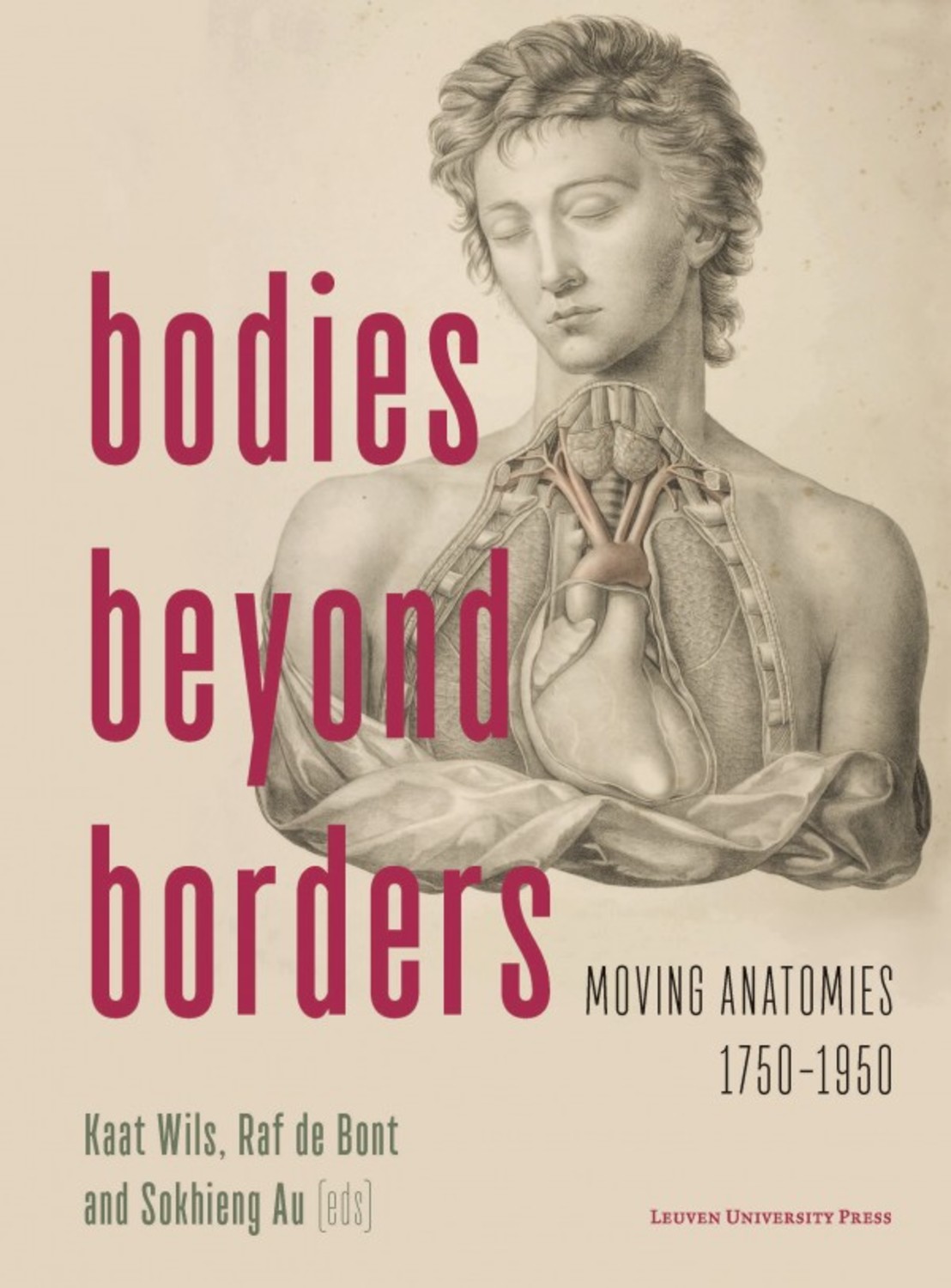
Bodies Beyond Borders
Moving Anatomies, 1750–1950
Edited by Kaat Wils, Raf De Bont, and Sokhieng Au
Regular price
€59.50
(including 6% VAT)
Sale
Edited volume - paperback
Bodies Beyond Borders analyzes the notion of circulation in anatomy. Following anatomy through different locations and cultural domains permits a deeper understanding of its history and its changing place in society. The essays in this collection focus on a wide variety of circulating ideas and objects, ranging from models and body parts to illustrations and texts. Together, the essays enable rethinking the relations between metropolis and colony, university and fairground, and scientific and artistic representations of the human body.
This publication is GPRC-labeled (Guaranteed Peer-Reviewed Content).
Contributors: Sokhieng Au (KU Leuven), Margaret Carlyle (University of Minnesota), Tinne Claes (KU Leuven), Veronique Deblon (KU Leuven), Raf De Bont (Maastricht University), Stephen C. Kenny (University of Liverpool), Helen MacDonald (University of Melbourne), Natasha Ruiz-Gómez (University of Essex), Kim Sawchuk (Concordia University), Naomi Slipp (Auburn University-Montgomery), Joris Vandendriessche (KU Leuven), Kaat Wils (KU Leuven)
Introduction: Moving Anatomies, 1750-;1950
I CENTERS AND PERIPHERIES
Artisans, Patrons, and Enlightenment: The Circulation of Anatomical Knowledge in Paris, St. Petersburg, and London
Anatomy and Sociability in Nineteenth-Century Belgium
Corpse Stories: Anatomy, Bodies and a Colonial World
Anatomical Collecting and Tropical Medicine in the Belgian Congo
II ACADEMIC AND PUBLIC KNOWLEDGE
Imitating Anatomy: Recycling Anatomical Illustrations in Nineteenth-Century Atlases
Alternative Anatomy: The Popular Lectures of Constant Crommelinck in Brussels (1850-;1880)
“Specimens Calculated to Shock the Soundest Sleeper”: Deep Layers of Anatomical Racism Circulated On-Board the Louisiana Health Exhibit Train
III ART AND MEDICINE 195
International Anatomies: Teaching Visual Literacy in the Harvard Lecture Hall
Shaking the Tyranny of the Cadaver: Doctor Paul Richer and the “Living Écorché”
Animating the Anatomical Specimen: Textbook Anatomy and the Incorporation of Photography in JCB Grant's “An Atlas of Anatomy”
About the authors
Format: Edited volume - paperback
Size: 230 × 170 mm
304 pages
35 b&w , 16 colour illustrations
ISBN: 9789462700949
Publication: March 27, 2017
Languages: English
Stock item number: 115001
Raf de Bont is lecturer at the History Department of Maastricht University.
Sokhieng Au is programme staff in the Analysis and Advocacy unit of Médecins Sans Frontières and a research fellow in history at KU Leuven.
Domenico Bertoloni Meli, Journal of the History of Medicine and Allied Sciences, Volume 74, Issue 2, April 2019, Pages 221–223, https://doi.org/10.1093/jhmas/jrz006
With movement as a common thread among the papers, the editors draw out multiple facets of anatomy and anatomical objects as they permeated and transformed along with medical heritage and education.
Tricia Close-Koenig, ISIS—Volume 110, Number 1, March 2019
No hay duda del asiento que tienen todos los capítulos en la transformación historiográfica operada en las últimas décadas dando centralidad al marco analítico proporcionado por la cultura material, los estudios visuales, el giro espacial o los museum studies. El resultado final, estructurado en tres ámbitos, pone de manifiesto una rica variedad de situaciones y significados, que ocurren en la medida en que se produce el desplazamiento o la intersección de lo anatómico. [...] El libro resultará útil a quien entre en estos ámbitos que ponen en jaque planteamientos dicotómicos, pues los estudios se fundamentan en lenguajes y recursos transdisciplinares y aportan además un enorme y actualizado aparato crítico.
Alfons Zarzoso, Dynamis 2018; 38 (2): 505-540
'aan te raden voor geïnteresseerden in de geschiedenis van medische wetenschappen, materialiteit en wetenschappelijke personae. De platen achter in het boek zijn prachtig.'
Fenneke Sysling, Studium 10/2 (2017)
